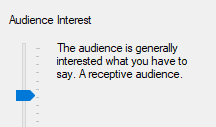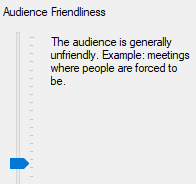Your cart is currently empty!

Focusing on the audience for a successful speech
When talking about public speaking, our main reason to be there is the audience. Our goal is to captivate them and deliver the information we have in the best way possible for them. Finding out which is the best way is the challenge.
All audiences are different; yet, there are some general types that can be very helpful for you to know. Fitting the audience in front of you in one of those categories will help you to find a better way of reaching them.
Generally speaking, we can define types of audiences based on two points: their level of knowledge on the subject of the speech and their attitude towards the presentation.
Defining the audience based on their attitude
Will they listen to you? Will they pose difficult questions? Should you have a friendly, open posture? Are you giving enough information? These are the questions you probably should be asking yourself before stepping onto a stage.
For many years, I worked with children, training their social skills, including public speaking. I often asked them what was that they fear when talking to the class. The answers were very clear; “I’m afraid I’ll look silly.”; “I’m afraid they will make fun of me.”; “They will get mad… or bored…”. For them, it was obvious if one of those things would happen, other children might not play with them or be their friends afterward…
Well, as an adult, you probably wouldn’t use those expressions, but deep down, your fears are likely very similar.
Reaching each audience type
Thinking about the possible audience attitude can be very frightening for a speaker. Unpredictability is one of the most stressful factors for human beings in any situation. The best way to deal with it is by gathering some knowledge. The more knowledge you have, the more easily you predict the audiences’ behavior and create a plan of action.
You can summarize your audience into 4 major types, based on their general attitude. Understanding them is a huge step towards a good presentation.
Start by gathering the most information you can before your presentation. Then, during it, don’t be afraid to observe the people in front of you. Try to fit them into one of the next categories for a more effective approach.
Receptive
They are generally open to your ideas, so you can also be more open. Tell them a personal story, smile, create empathy. That will help you to connect with them.
A receptive audience is ‘the dream’; it’s what every speaker hopes for. They are there because they believe in you. They are curious about what you have to say or simply like the subject you’ll talk about. They’ll make you feel more encouraged, smile more and pay attention to you.
Uniformed
Sometimes, your audience doesn’t have enough knowledge about your topic. They are there specifically to learn, which makes you an authority for them. Your main goal is to educate them, give them the information they need to understand your point of view. Be especially careful not to give them too much information; don’t exhaust them or they will lose focus.
Also, don’t try to persuade them to follow a specific path. Persuade them that you have the information they need to make their own decisions and you will have gained their trust.
Hostile
This is, without a doubt, the scariest type of audience for most. It is the one most pray they never encounter; yet, even though it might be hard to believe, they’re not your worst enemy. This is particularly true if you are confident about the message you’re delivering.
With this type of audience, very careful speech preparation is mandatory. Your goal is to earn their respect. Deliver an objective, clear message, without trying to change their opinion. If you are able to lead a hostile audience to ponder the information you just gave them, that is a great achievement.
Apathetic
An apathetic audience is the one that barely reacts to the speech or yourself. At first sight, this audience type might not seem very complicated; yet, they are the worst audience you can encounter. They don’t care about what you have to say. The message is not important; you are not important. Many times, they were forced to be there for some reason, and they will not make your life easy in any way. This is the kind of audience that might leave in the middle of your presentation.
Your goal is to convince them that what you have to say matters for them. Show them you know who they are, that you understand them. Try to create some empathy, so they will give you a chance. Focus on the points of your speech that might be important for them, even if it’s not your main message, to create a connection.
Sense the room to identify your audience
It’s not always possible to know beforehand the kind of audience you’ll face, so it’s important that you inform yourself the most you can before your speech, but also to pay careful attention to the people in front of you.
Something is not right? Don’t panic. Every audience is reachable with a good strategy. You just need to find it, focusing on each possibility and practicing a lot.
Cátia is a psychologist who is passionate about helping children develop and train social skills.




Leave a Reply